These species can cause confusion with beginners to wader watching but certain features make it not too difficult to sort out.
Ruff
Breeding male:
These arrive on our shores as from August and are unmistakable as they are totally individual in colouration and state of moult. They can range from golden yellow to jet back and all points between.
The middle bird in these distant shots of ruff coming out of breeding plumage is the same bird in the 2nd snap. Note longish legs and a slight decurve on the bill which again, can be red, orange or black. As can be seen in all these, huge variety and not likely to be confused with anything else.
Non breeding male
These are a brown bird, sometimes still with a red/orange bill, slightly decurved and invariably show orange/red legs which is where the confusion can set in. The ruff and reeve (female) are a strange, somewhat pot bellied shape with a humped back.
This male in non breeding plumage at first glance does resemble a redshank but the shape is wrong, the bill thicker and shorter and there is much more white edging on the wing feathers whilst the belly is unmarked white. A slight tinge of brown on the chest. If this is a more peachey colour that will probably indicate a first year/juvenile bird. The latter stop off on our shores in huge numbers as from late August. The one above shows a dark tip to the bill only as it is covered in mud!
Juvenile:
Resembles the non breeding male in many ways but has a dark bill. Two juveniles shown here showing the slight decurve on the dark bill and dark legs but remember, this colour can always be mud, not the true leg tone. The light colouration on the breast is much more than the non breeding male whilst the belly is still white.
The reeve is similar to both the non breeding male and juvenile and to go into all possibilities of this relatively easy bird to identify but tricky to pinpoint age and sex is note required here. Below a selection of ruff shots to indicate the range, bearing in mind most seen in the UK will be in non breeding plumage.
Very difficult to say for sure but possibly top 2 are juvenile, 3rd is non breeding reeve and last one non breeding male. Enough here to be able to spot a ruff.
In flight, a ruff has a barely perceptible white wing bar, a tapering tail edged white with a central brown bar. The white is plain, not marked. Usually a silent bird.
Conclusion: Medium length bill, thick at base and tapering, red/orange or dark. Legs variable but the pot belly look, humped back and white edging to the feathers as shown in these photos should be good enough to say ruff confidently.
Redshank
After Dunlin probably the most common of wader, so another good one to become familiar with to eliminate from your inquiries.
Typical redshank here, longer bill than ruff and more delicate, a darker, richer brown and, always helpful, frequently a white eye ring as shown here. Fortunately, not too much change for breeding plumage, just finer markings and a lighter colour but still a redshank. Note the bill changes from orange through to a dark tip.
In flight easy to identify as the trailing edge of the wing from body to near the point is a broad white bar whilst it will also show a cigar shaped white area above the narrowly barred tail from which a good length of red/orange leg and feet protrude. Photo below shows all those features clearly. Upon take off and landing the Redshank can be very vocal with loud teeeyuu calls, usually uttered with a visibly open bill. A good call to learn for mud bank and marsh bird watching
Breeding plumage.
As can be seen, not big change, still orange legs and thin bill of medium length, straight and the white eye ring still present, albeit less obvious. Below, a few more redshank photos, almost all from North Norfolk as the breeding plumaged one above is. This successfully raised 2 juveniles just outside a hide upon Cley Reserve. The 3rd photo from The Camargue as there is also a Black Winged Stilt in the shot. However, the other bird is a Spotted redshank. See below for more details.
Spotted Redshank
This can be a confusion species with Common redshanks but again, many features differ. Firstly it has a far longer bill which is almost entirely dark apart from a red section near the base. Also, sounds minute but it is apparent through binoculars, the very tip of the bill is clearly downturned, sometimes looking like it is actually snapped. The legs of Spot Shank are orange red but much longer than Common redshank. Plumage in non breeding stages is similar, usually lighter whereas in breeding plumage it is unmistakeable: Jet black. In flight the Spotted redshank shows the white cigar shape but the wings are brown with no white on the secondaries.
Spotted redshanks can be found at typical wadering grounds on migration, particularly in September where they may still show signs of the black breeding plumage but most will be as shown below. Note the salient points of colouration, bill tip and the final feature, a clear white supercilium (eye stripe) beginning at the base of the bill and reaching the eye. These photos from The Camargue, Southern France.
In picture 3 the bird, like godwits, is actually swimming, something I have never seen a Common redshank do. The penultimate photo shows 4 Spotted redshanks, a Little ringed plover and a Common sandpiper. (Later for the latter two.) The final picture shows the huge plumage change into breeding gear. No mistaking this one.
Greenshank
As the name implies, the legs of this bird are yellowy green and that is usually enough to identify it but if wading they will not be visible. The next diagnostic feature is that the bill has a clear upturn to it. Not as pronounced as an avocet but more so than a Bar tailed godwit. The bill of greenshank can be a yellowy/green through to a darkish blue tinge and is stronger and thicker than the redshank and Spotted redshank. Again, a migratory bird with them being a rare but annual visitor to Stansted Airport lagoons. These photos taken both in The Camargue and North Norfolk.
Again, no huge change in the plumage throughout the year.
2nd photo is a distant shot from The Algarve, but in reality, this is how they are frequently observed. The upcurve on the bill is noticeable in both photo1 and 2, whilst the 3rd photo from Pont de Gau, The Camargue shows the clear white belly, light brown feathering on the throat and breast and obvious leg colouration. To the right is a Spotted redshank
The bird that most resembles the Greenshank is the rare to our shores, Marsh sandpiper. If you were to encounter one of these on your day out, rest assured, you would not be alone. There would be birders and photographers everywhere. Just for comparison here is one from The Camargue and one from Yala, Sri Lanka from 6 years ago. Note the needle thin bill which this bird uses to delicately pick insects off the surface of the water, whilst the stouter Greenshank bill is for probing mud. Also, a dark bill.




















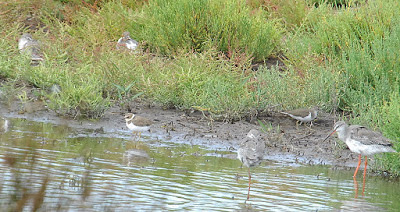

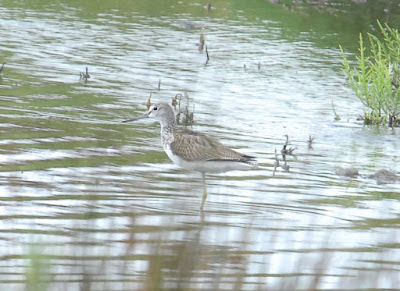












































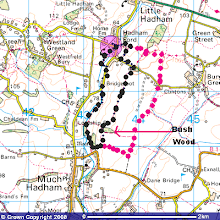
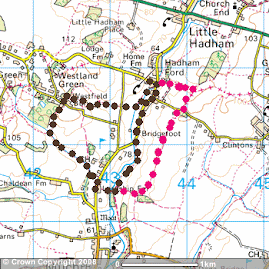
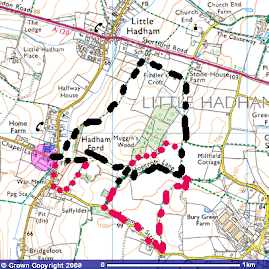
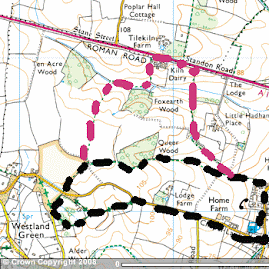
No comments:
Post a Comment